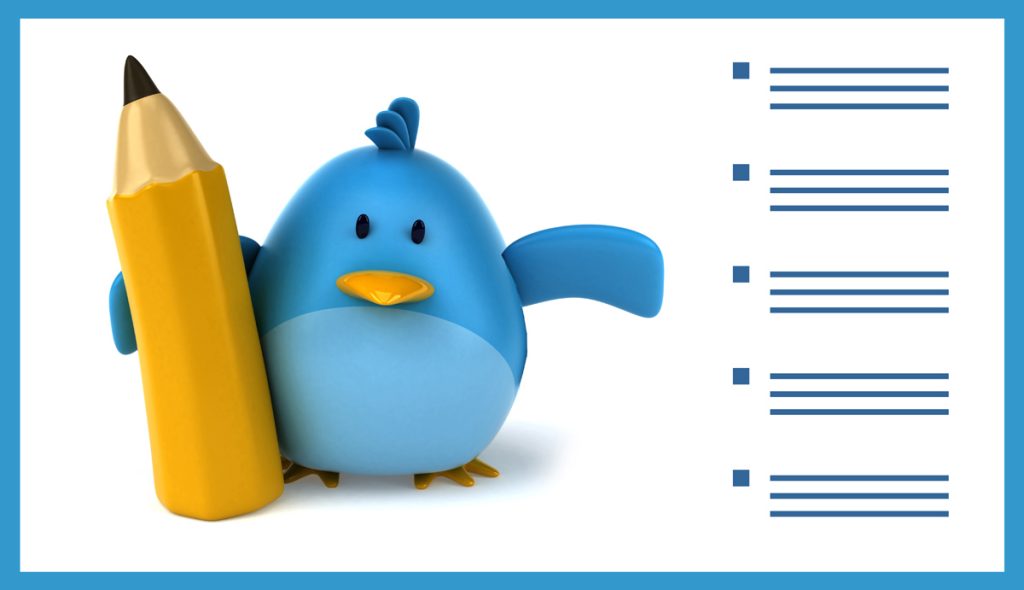UPDATED FEBRUARY 28, 2024
Is your message clear?
Have you ever:
- Left a website because you couldn’t understand what the company did?
- Read the same paragraph several times over, because it wasn’t sinking in?
- Had to call an organisation because their communication made no sense?
- Had more questions after reading something than you had before you read it?
This is what happens when organisations fail to communicate clearly.
If your messaging is difficult to read or doesn’t make sense, you risk leaving your audience feeling confused, uncertain — and even stupid.
And nobody wants to be made to feel like that.
What are organisations doing wrong?
There are a number of ways an organisation can make its communications difficult to understand. Let’s have a look at some of them.
Using inaccessible language
Some organisations use jargon and industry terms their audience isn’t familiar with. This makes their copy challenging to read and difficult to understand.
If your audience needs a dictionary to decipher your message, they’ll look for someone who can explain it more simply — and they’ll probably buy from them, too.
Being vague
Some organisations use vague and unhelpful terms when they communicate and this leaves their audience in doubt about what they’re offering and how they can help.
Assuming readers’ knowledge
Some organisations assume their audience knows more than they actually do, which means they skip over important details and don’t give the full information.
Doing this can leave your audience feeling uninformed, confused and excluded, which is never the way to make a good first impression.
Trying to sound ‘professional’
Some organisations equate sounding professional with using big fancy words and complex sentence structures. But this usually just makes them sound conceited and out of touch.
And some organisations think sounding professional means sounding corporate, stuffy, and boring. But when you’re talking to your prospects, this is often unnecessary and will only put your readers to sleep.
Yes, your audience wants to know they’re dealing with a professional organisation, but using big words isn’t the way to show that.
The best way to show you’re professional is to show you understand your prospects and what they really want. For starters, that’s to understand what you’re saying and not to be bored senseless!
Prioritising being clever over being clear
Some organisations try to be clever with their words, using jargony puns, implicit references or humour. But when their cleverness doesn’t land, their audience is left wondering what they’re not getting.
It’s cool to be clear
Or, if you prefer something with a rhyme, it’s good to be understood!
When you communicate clearly, customers understand exactly what you’re offering and how you can help them. There’s no doubt, no confusion and no misunderstanding.
Clear copy should be easy to read and digest on the first attempt. So your audience can focus on your message rather than stumbling over your delivery.
So how can you write more clearly and reap these benefits for your business?
How to write clearly
There are lots of ways to make sure your writing is clear, but here are 10 that I use regularly and have always worked for me.
Know who you’re talking to
When you’re writing anything, the first thing you need to consider is the audience. You need to know who you’re talking to so you’re not assuming anything and you’re giving them all the information they need.
Ask yourself:
- Who will be reading this?
- What is their background?
- How much do they already know?
- How much do you need to explain?
This will help you craft a message that’s appropriate for your audience and meets them at their level.
If you’re writing for people with different levels of knowledge, you should tailor your message for the people who know the least. But in cases like this, it’s usually best to create separate communications.
Be specific
Wherever you can, replace vague words with more specific and descriptive terms so your audience understands exactly what you’re talking about.
For example:
- Solutions —> computer systems, sales strategies
- Stuff —> personal belongings, hiking equipment
- Good —> effective, high-quality, well-fitting
- Bad —> rude, defective, dirty.
Be explicit
Being explicit means expressing yourself directly, plainly and openly with no implied or underlying message. The result is a crystal clear and unambiguous message that leaves no room for error or misunderstanding.
Explicit communications are always effective, but especially when you’re giving directions or instructions that have to be followed to the letter.
Be precise
If you want to write clearly, you should also write precisely, using clear, descriptive language that expresses exactly what you mean.
For example:
- The news wasn’t just big, it was critical
- The room wasn’t just small, it was cramped and uncomfortable
- He wasn’t just untidy, he was filthy and bedraggled
- The cheese wasn’t just melted it was congealed.
Being precise also means using proper numbers and percentages rather than imprecise quantities like plenty, a bit, a lot or a few.
Be concise
Writing clearly and concisely go hand in hand. The fewer words you use, the more clear, direct and focused your writing should be.
To write more concisely, get to the point quickly and avoid:
- Waffle and wordiness
- Repeating yourself
- Going off on tangents
- Going round in circles.
Keep it simple
Writing simply is a skill — and it’s the best way to communicate complex information.
When you write simply, you use clear straightforward language and make each point carefully and concisely. The idea is to make your writing easy to read and easily digestible, so it keeps your readers engaged.
It’s worth remembering that simple isn’t the same as basic. You can write simply and still sound intelligent, articulate and professional.
Avoid ambiguity
If a sentence is ambiguous it means you can interpret it in more than one way — and that will just confuse people.
❌ Example:
You’ll need to provide fingerprint ID or passcode and email address.
You can read this sentence three ways, which means you can’t be sure if you need to provide:
- Fingerprint ID only
- Fingerprint ID and email address
- Passcode and email address
What the writer meant to say was that you need to provide fingerprint ID or passcode and email address.
In this case, the ambiguity could be corrected with punctuation, like this:
✅ You’ll need to provide fingerprint ID, or passcode and email address.
But to be absolutely crystal clear, we can confirm it in the words, like this:
✅ You’ll need to provide either your fingerprint ID or your passcode and email address.
Keep your lengths in check
By lengths, I mean your sentences and paragraphs.
Sentences
For readability, try to keep your sentences to a maximum of 23 words and aim to make one or two points in each sentence.
Varying the length of your sentences is a good way to keep your audience’s attention. Case in point, this amazing example by Gary Provost.
![Image] The art of sentence length.: writing](https://external-preview.redd.it/ApenTFXDKfJDSnQt1P_TAGC8ZHUjno4wPSv47_LCZn4.png?auto=webp&s=89fd7c96d14cd211d60ac23bd3b3e5218855e1aa)
Paragraphs
I’m sure some people have never heard of a paragraph. Their written content looks like an impenetrable wall with no breaks in it. To a reader, this can be incredibly off-putting — especially when it’s on a screen.
Instead, see what I’m doing here in this blog post. I’m keeping each paragraph short — 3–4 lines at most — and leaving a line space between them.
As a general rule, you should start a new paragraph when you:
- End an introduction or start a conclusion
- Introduce a new idea or make a new point
- Present an idea or information that contrasts with what you’ve already written
- Want to create a pause.
Avoid words you don’t understand
Have you ever seen a TV comedy show where a character uses the wrong word and everyone laughs.
“Mange tout, Rodney, mange tout.”
But it might not be so funny if you do it on your website, or in a brochure that’s been distributed to thousands of potential customers.
You might think big words make you sound more professional, but they can also make you sound ridiculous if you get them wrong.
So how do you avoid mistakes like these?
If you have any doubts about the meaning of a word, look it up in a dictionary. If it means what you want to say, check the usage examples and make sure you’re using it correctly.
Or, more simply, if you’re unsure about a word and don’t feel confident to use it — don’t. Choose a word you do understand and feel comfortable with instead.
Use more transition words
Transition words — also known as linking words or connecting words — are the glue that holds an argument together.
Here are some examples of transition words:
- Because
- Therefore/So
- Which means
- However/But/Although
- Whereas
- For example
- Similarly
- Otherwise
- Consequently/As a result.
Some writing guides will tell you to cut words like these because they’re ‘unnecessary’. But they actually have an important part to play in making your copy more readable and helping your readers understand what you’re saying.
Transition words work by signposting readers through your logic and train of thought. And they add clarity by showing the relationship between the points you’ve made.
Limit the number of clauses in each sentence
Clauses are things like conditions, requirements and restrictions. When you overload a sentence with clauses it can become virtually impossible to make sense of it.
❌ Example:
A client becomes eligible for the free ebook when, before commencement of the first session (which they have already paid for) they have signed up for sessions 2 and 3 (to be completed after the first session) and have paid the deposits for sessions 2 and 3.
If you’re having to use separating commas and brackets like this, then you probably have too many clauses. Let’s see if we can unravel this.
✅ Example:
To be eligible for the free ebook, a client must have paid in advance for the first session. In addition, the client must have signed up for sessions 2 and 3 and have paid deposits for those sessions.
Splitting the sentence in two means we’re not overloading either sentence with too many clauses.
Avoid awkward sentences
There are numerous ways a sentence can be awkward to read. Let’s look at some of them.
Wordy sentences
Wordy sentences are hard to read because they contain a lot of unnecessary words. These words can be cut from the sentence without affecting the meaning or what you’re actually trying to say.
❌ Example:
In order to cater for different dietary requirements, we take into consideration the need for alternative options. Under circumstances in which a dish is unsuitable for you, we can adapt it specifically to your wants and needs.
These sentences have so many words, they’re not making good sense. Let’s see if we can fix that.
✅ Example:
We cater for different dietary requirements. If a dish isn’t suitable for your needs, we can customise it for you.
Backwards sentences
Backwards sentences leave the most important point until the end, when it should be at the beginning.
❌ Example:
Affordable housing, ample employment opportunities, excellent transport links, stylish bars and quality restaurants and are all benefits of living in East London.
Your reader won’t even understand what the sentence is talking about until they get to the last six words. And then they might have to read the whole sentence again. As a writer, you want to avoid this.
✅ Example:
Benefits of living in East London include affordable housing, ample employment opportunities, excellent transport links, stylish bars and quality restaurants.
Repetitive sentences
Unnecessary repetition makes sentences clunky.
❌ Example:
Good trainers help each trainee they train to become a better trainee.
This is a terrible sentence! Aside from the repetition, it’s obvious that this should be the case, isn’t it? We could improve it, like this:
✅ Example:
A good trainer helps their trainees improve.
But, honestly, this one should be killed with fire!
Junk the jargon
If your readers need a dictionary to understand what you do, they’ll lose interest there and then. And sometimes even a dictionary won’t help.
❌ Example:
We’re experts in statistical analysis and data reconfiguration.
What on earth does this company do? Let’s try a jargon-free explanation to make it clearer.
✅ Example:
We simplify and explain data, so it’s easy to understand.
Explain abbreviations and acronyms
Some abbreviations and acronyms are well-known, but many are industry specific. You might use them so routinely, you take them for granted. But your customers won’t have a clue what they mean.
What is an abbreviation?
An abbreviation is where we just use the first letter of each word in a name or phrase to shorten it. For example, RSPCA (Royal Society for the Prevention of Cruelty to Animals).
What is an acronym?
An acronym is similar to an abbreviation, but the first letters of each word form a new word. For example, NASA (National Aeronautics and Space Administration).
When to explain abbreviations and acronyms
If you’re writing something and you’re going to be using the same abbreviation or acronym multiple times, just explain it the first time you use it.
✅ Example:
We will come to your premises and assess your specific Heating, Ventilation, and Air Conditioning (HVAC) needs.
✅ Better example:
HVAC stands for Heating, Ventilation, and Air Conditioning. Our HVAC systems are efficient and easy to install.
Try writing more conversationally
If you want to sound more professional, you might be tempted to use more formal language. But this is the language you’d use if you were writing something like a formal report, academic paper or legal document.
For everyday communications with your customers, you can be more informal and conversational in the way you write.
What is conversational writing?
Conversational writing is when you write more like you speak. As though you’re talking to your ideal customer as they’re sitting in front of you — but the best possible version of that. It’s more filtered and considered, with any waffle and wordiness cut out.
Why use conversational writing?
When you write conversationally, it’s less forced and more natural. You’re less likely to overthink it or use big words and elaborate language. And it will be more digestible.
Your audience will appreciate this — whoever they are and however ‘professional’ they might seem. Because everybody likes things that are clear easy to read. And nobody wants to have to read the same paragraph more than once if they don’t have to.
Does your business need clearer copy?
If you feel your business communications could benefit from clearer and more direct copywriting, maybe I can help.
I’m a UK freelance copywriter with more than 23 years’ professional writing experience. And I specialise in explaining complex ideas, issues, instructions and propositions simply and clearly.
To discover more about how I could help you, visit my main website where you’ll find all the information you need.

You might also like…



